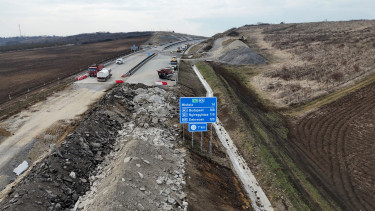Map shows retreat of coronavirus in Europe

Every week, the ECDC publishes a map on its Twitter page that colours countries according to the prevalence of coronavirus infections. The positive trend of the past weeks continued to be reflected in last week's data, with the outbreak declining in line with the seasonal pattern.
The map published on 21 April shows this:

A week earlier, on 14 April, the map still looked like this:

The ECDC notes that areas with a test rate of less than 600 per 100,000 inhabitants are shown in grey. For this reason, Hungary is now grey on the map.
The weekly average of COVID-19 tests in Hungary dropped to 5,851 by Wednesday from 9,214 a week earlier. The pandemic is definitely in retreat, but it's not gone and experts warn it will be back in the autumn. Looking at the track record of Hungarian authorities, we should not expect effective preparations to be made to avoid unnecessary infections and deaths. But maybe, just maybe five 'waves' were enough to draw the right conclusions. We wouldn't bet on it, though.
Given the extremely low number of tests performed, even the longer-term averages and/or their ratios cannot be used as great indicators.


Hungary has now more than 46,000 Covid deaths, which secures the country the fourth place in the world in terms of deaths per one million population, or the third spot if we disregard Bosnia and Herzegovina with a small population of 3.24 million people.
Here's a comparison of the number of COVID-19 cases and deaths for two waves with a 12 months difference.

Here's a chart with the data that really matter (deaths, patients in hospital and on ventilator) for 2022 alone. Despite our best effort to dampen the volatility caused by official reporting practices (i.e. authorites do not Covid numbers on weekends and holidays), there are still zigzags there.

Both of the charts below show the same ratio only for different periods.

And finally, key week-on-week changes in 7-day averages that smoothen the volatility daily figures would cause and are supposed to show when a trend starts to reverse.

Cover photo: Getty Images








